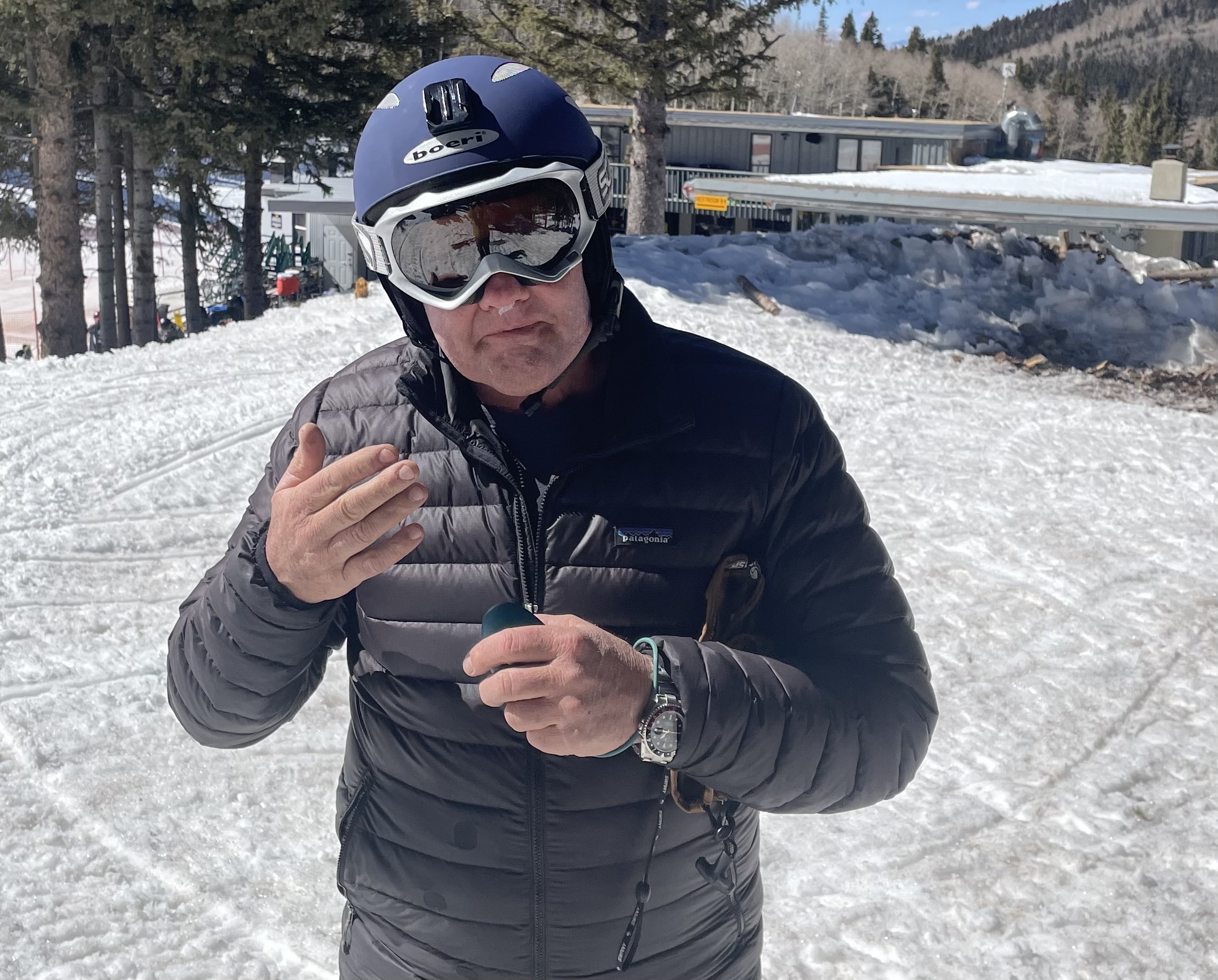UV Radiation and Reflectivity: Illuminating the Sun's Deceptive Ways
In our exploration of UV radiation, we've traversed altitudes and danced with clouds, and now, it's time to unravel the mysteries of UV radiation and reflectivity. Prepare for some enlightening insights!
Have you ever returned from a day of skiing, only to find a sunburn in unexpected places despite diligent sunscreen application? A friend recently came off the mountain with a curious little sunburn under his nose. That's the cunning work of UV reflectivity! UV rays can bounce off surfaces, catching us off guard and leaving our skin vulnerable. Reflectivity isn't just a concern for skiers—it affects various outdoor activities. Picture a golfer out on the green, or a fisherman casting a line. Even in these seemingly serene settings, UV rays can bounce off the grass, water, or sand, increasing the risk of sunburn.
UV rays don’t only reflect; they also penetrate. As a scuba enthusiast, I once believed the water's reflectivity shielded me from UV rays underwater. Let this be a reminder not to make assumptions. While water does reflect around 10% of UV rays, UV radiation can also penetrate up to 170 feet underwater, proving its persistence even in the depths.
UV Radiation Fundamentals
Before we delve into the intricacies of reflectivity, let's revisit the fundamentals of UV radiation. Ultraviolet light spans three classes: UVA, UVB, and UVC, each with distinct wavelengths and biological effects. Ultraviolet, or UV, is simply radiation beyond the visible light spectrum (according to humans). Many animals see light well beyond the visible light spectrum (dogs, cats, reindeer, ferrets, bees 🐝, and many insects), for example. UVA, UVB, and UVC cover wavelengths from 100-400 nm (nanometers). These three wavelengths differ in their biological activity and the extent to which they can penetrate the skin. The shorter the wavelength, the more harmful the UV radiation, but shorter wavelength UV radiation is less able to penetrate the skin.
UV Radiation and Reflectivity
Most surfaces reflect UV radiation and add to the overall UV levels that we experience. That's why a hat can’t fully protect you from UV radiation exposure. Grass, soil, and water typically reflect less than 10 percent of UV radiation. Sand reflects about 15 percent, and sea foam reflects about 25 percent UV. Fresh snow is a very good reflector and can reflect as much as 80% of UV radiation.
Environmental Factors and UV Exposure
UV radiation exposure, including percentages of reflectivity, is impacted by the environmental factors around you. From the sun's angle to latitude, altitude, and cloud cover—each element influences our direct UV exposure and indirect exposure from reflectivity.
Time of the Year and Time of the Day:
In the mid-latitudes, UV levels are highest during the summer months around mid-day (solar noon) when the sun’s rays take the most direct path to the surface. By contrast, early morning and late afternoon allow a greater angle through the atmosphere, and the sun’s rays are filtered, allowing less UV radiation to the surface. This is why most advice around sun protection suggests going indoors or seeking shade during the mid-day hours.
Latitude:
UV levels are higher closer to the equator, where the sun’s rays have a shorter distance to travel through the atmosphere, and so less UV radiation is absorbed by the atmosphere.
Altitude:
Remember that with increasing altitude, less atmosphere is available to absorb UV radiation. A rule of thumb is that with every 1000 meters (3300 feet) above sea level, UV radiation increases by 10 percent.
Clouds and Haze:
Be careful not to underestimate the amount of UV radiation passing through clouds and haze. UV levels are highest under cloudless skies, and cloud cover generally reduces exposure. However, light or thin clouds have almost no effect and may even enhance UV levels due to scattering. Even in shade high UV levels can cause sunburn due to reflectivity.
The good news is that protecting your skin from reflective UV radiation is simple, in addition to wearing protective clothing, hats, and UV protection sunglasses, wear your sunscreen! We recommend SPF30 or higher, make sure to reapply every 2 hours, or more frequently if you’re in the water or sweating heavily. And don’t forget to cover those areas vulnerable to reflection like your neck and chin, ears, and under your nose.
Interested in sunscreen and sun safety? Follow along with us as we share insights and environmentally safe products to elevate your sun care routine.



